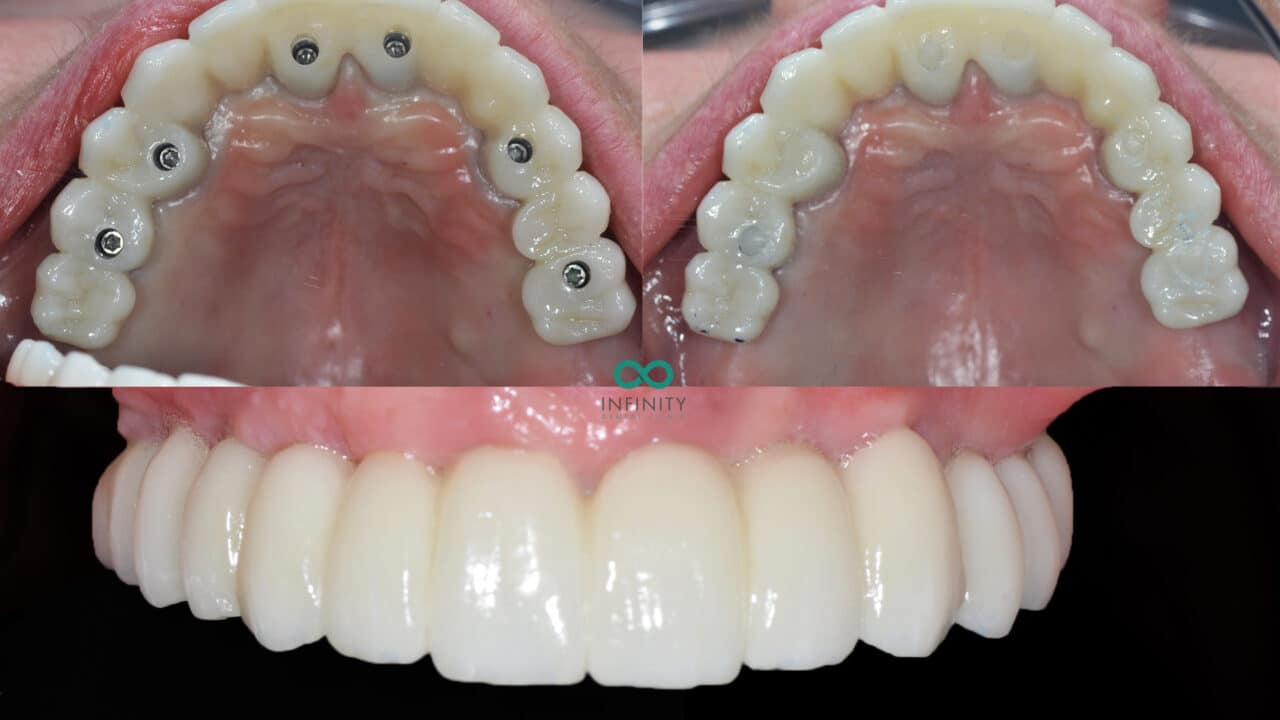3 Easy Facts About Dental Sense Shown
3 Easy Facts About Dental Sense Shown
Blog Article
The Main Principles Of Dental Sense
Table of ContentsHow Dental Sense can Save You Time, Stress, and Money.The Buzz on Dental SenseSee This Report about Dental SenseDental Sense Things To Know Before You Buy
are clinical devices surgically dental implanted right into the jaw to recover a person's capability to eat or their look. They supply support for fabricated (fake) teeth, such as crowns, bridges, or dentures. When a tooth is shed as a result of injury or illness, a person can experience difficulties such as quick bone loss, malfunctioning speech, or adjustments to chewing patterns that result in pain.Oral dental implant systems contain a dental implant body and dental implant abutment and may also include a joint addiction screw. Kids dental. The oral implant body is operatively put in the jawbone in location of the tooth's origin. The dental implant abutment is usually connected to the dental implant body by the abutment fixation screw and expands via gums into the mouth to sustain the affixed man-made teeth
(https://ameblo.jp/dentalsense1/entry-12882048969.html)Structure of The Dental Implant System picking dental implants, speak with your dental company concerning the potential advantages and threats, and whether you are a candidate for the treatment. Things to think about: Your total health and wellness is a crucial consider identifying whether you are a good candidate for oral implants, the length of time it will take to recover, and exactly how long the implant might remain in area.
Smoking cigarettes might affect the healing process and reduce the long-term success of the implant. The recovery procedure for the implant body might take several months or longer, during which time you typically have a momentary joint in place of the tooth. the oral implant procedure: Carefully comply with the oral health guidelines offered to you by your oral service provider.
The Basic Principles Of Dental Sense
Implant failing can lead to the requirement for another medical treatment to repair or replace the dental implant system. Restores the capacity to chew Restores aesthetic look Helps maintain the jawbone from reducing because of bone loss Preserves the health of the surrounding bone and gums Aids keep adjacent (close-by) teeth secure Enhances top quality of life Damages to surrounding natural teeth throughout implant placement Injury to the surrounding cells during surgical procedure, such as sinus perforation Injury throughout surgical procedure (for instance, crack of bordering jawbone) Inadequate function, such as seeming like the teeth do not bite together typically An experience that the tooth hangs or twisting in position resulting from a joint screw loosening up Implant body failing (looseness of the implant body) due to systemic infection, which may be more probable in patients with unrestrained diabetes mellitus because of neighborhood infection in bone and periodontals sustaining the implant body due to postponed healing, which might be more probable in patients that smoke Trouble cleaning the periodontals around the dental implant, leading to bad dental health Unattended gum disease Post-surgical feeling numb because of nerve impingement or damages Always notify healthcare carriers and imaging service technicians that you have oral implants before any type of magnetic vibration imaging (MRI) or x-ray procedures.
FDA is not aware of any kind of negative events reported for MRI or x-ray procedures with oral implants. Dental implants systems are normally constructed from materials that follow global agreement criteria of the International Company for Standardization (ISO) or ASTM International. These standards have details of what makes a safe material.

A dental implant is a structure that replaces a missing out on tooth. With screw-like gadgets, the cosmetic surgeon inserts an implant right into the jawbone, and it acts as an anchor for a synthetic tooth, called a crown.
Dental Sense Can Be Fun For Anyone
Some individuals are not qualified for oral implant surgical procedure. It is for oral surgeons to operate individuals with: acute illnessuncontrollable metabolic diseasebone or soft cells illness or infectionIf these concerns are settled, a person can have the surgical procedure. In, oral cosmetic surgeons avoid operating individuals with: If people with any one of the above undergo oral implant surgery, there is a higher threat of the dental implant failing.

Oral implant surgical treatment is a tailored process. It's not the very same for every person. Yet the adhering to provides a basic review of what you can expect your dental practitioner, dental surgeon, periodontist or prosthodontist to do: Put the implant operatively. Give you time to heal. Attach the message and last crown, bridge or denture.
Next, your specialist will thoroughly place the dental implant right into your jaw. Lastly, your specialist will certainly rearrange your gums and close the laceration with stitches. If your implant is near the front of your mouth, your dental professional will certainly make a short-term tooth for you to use until you recover. That means, you won't have a void in your smile while you recover.
Fascination About Dental Sense
Your provider can tell you what to expect in your scenario. Throughout the healing stage, your jawbone needs to fuse to the oral implant. This process, called osseointegration, is crucial for stability and long-term success. This procedure can take anywhere from three to nine months. In some cases, it may take much longer.
Once your implant heals, your dental practitioner can attach the joint (little port blog post) and your final remediation (crown, bridge or denture). This usually takes regarding one hour to complete and may require a 2nd small surgery. You shouldn't really feel any type of pain during your oral implant treatment due to the fact that your copyright will certainly use medication to numb your periodontals.
Report this page